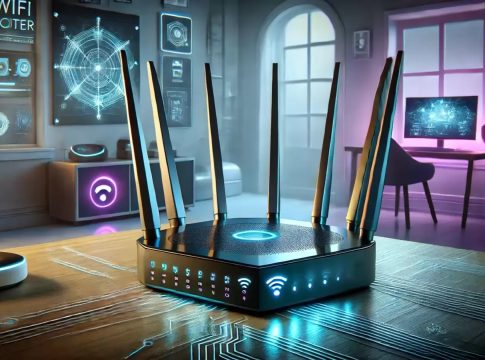A Power Play in Wi-Fi: The Battle for 6GHz Bandwidth
As we increasingly lean on high-speed internet for everything from gaming to virtual meetings, the power levels of our Wi-Fi devices are becoming a hot topic. The upcoming allocation of the 6GHz spectrum band offers a pivotal opportunity for enhanced connectivity, but discussions around power output have sparked a tug-of-war between tech giants and regulatory bodies.
Why Power Matters
The wattage emitted by Wi-Fi devices directly correlates to their performance. Higher power levels facilitate stronger signals, allowing data to travel farther and penetrate obstacles like walls more effectively. This is especially crucial for next-gen technology that demands low-latency connections, such as augmented and virtual reality applications. However, there’s a fine line—excessive power can lead to interference with existing services, including satellite and broadcasting systems.
The Push for Change
Big Tech companies like Apple, Google, Meta, and Sony are advocating for elevated transmission power to enhance user experiences across larger spaces. The Indian government is currently eyeing the 6GHz band for license-free Wi-Fi, but they’re treading cautiously. The Department of Telecommunications (DoT) has proposed low and very low power levels—specifically 5 dBm per MHz for indoor devices and -5 dBm for outdoor ones.
Industry associations like the Wi-Fi Alliance are urging the government to consider raising these limits. They argue that studies show minimal interference risk, and that higher power is essential for advanced use cases, including new AR/VR technologies and faster data rates.
The Regulatory Landscape
Despite the push from tech companies, government officials remain wary. Increased power limits could disrupt vital legacy services that many rely on daily. Consequently, the DoT has opted to keep current low power levels for license-free use, citing the need to protect established services.
Key Points to Note:
- Current Limits: Indoor devices max out at 30 dBm, while outdoor devices are capped at 14 dBm.
- Future Potential: While immediate power increases are off the table, the DoT has acknowledged that further studies may justify re-evaluating these limits in the future.
Minister Jyotiraditya Scindia has promised that rules for the 6GHz band will be finalized soon. Stakeholders have until mid-August to weigh in on the draft rules.
A Global Perspective
Globally, over 84 countries have already allocated segments of the 6GHz band for Wi-Fi use, setting a precedent that many tech companies argue India should follow. The Federal Communications Commission (FCC) in the U.S. has established regulations that are now being referenced by the DoT.
Interestingly, Reliance Jio is advocating for license-free use of the band, contrasting with the position of other telecom operators who are primarily focused on harnessing it for future 6G services. This creates an intriguing scenario where even within the telecommunications sector, views vary on how best to maximize the potential of the 6GHz spectrum.
A Balanced Approach
As technology continues to evolve, the calls for greater bandwidth capabilities reflect a growing desire for enhanced connectivity. However, a balanced approach is essential to safeguard existing services and provide seamless, future-proof solutions. Will higher power levels become the norm? That remains to be seen, but one thing is clear: the debate surrounding the 6GHz band will shape the landscape of digital connectivity for years to come.
(In this evolving narrative, stakeholder dialogues and regulatory assessments will play a crucial role in determining how high-speed wireless technology unfolds in India and beyond.)

Writes about personal finance, side hustles, gadgets, and tech innovation.
Bio: Priya specializes in making complex financial and tech topics easy to digest, with experience in fintech and consumer reviews.

